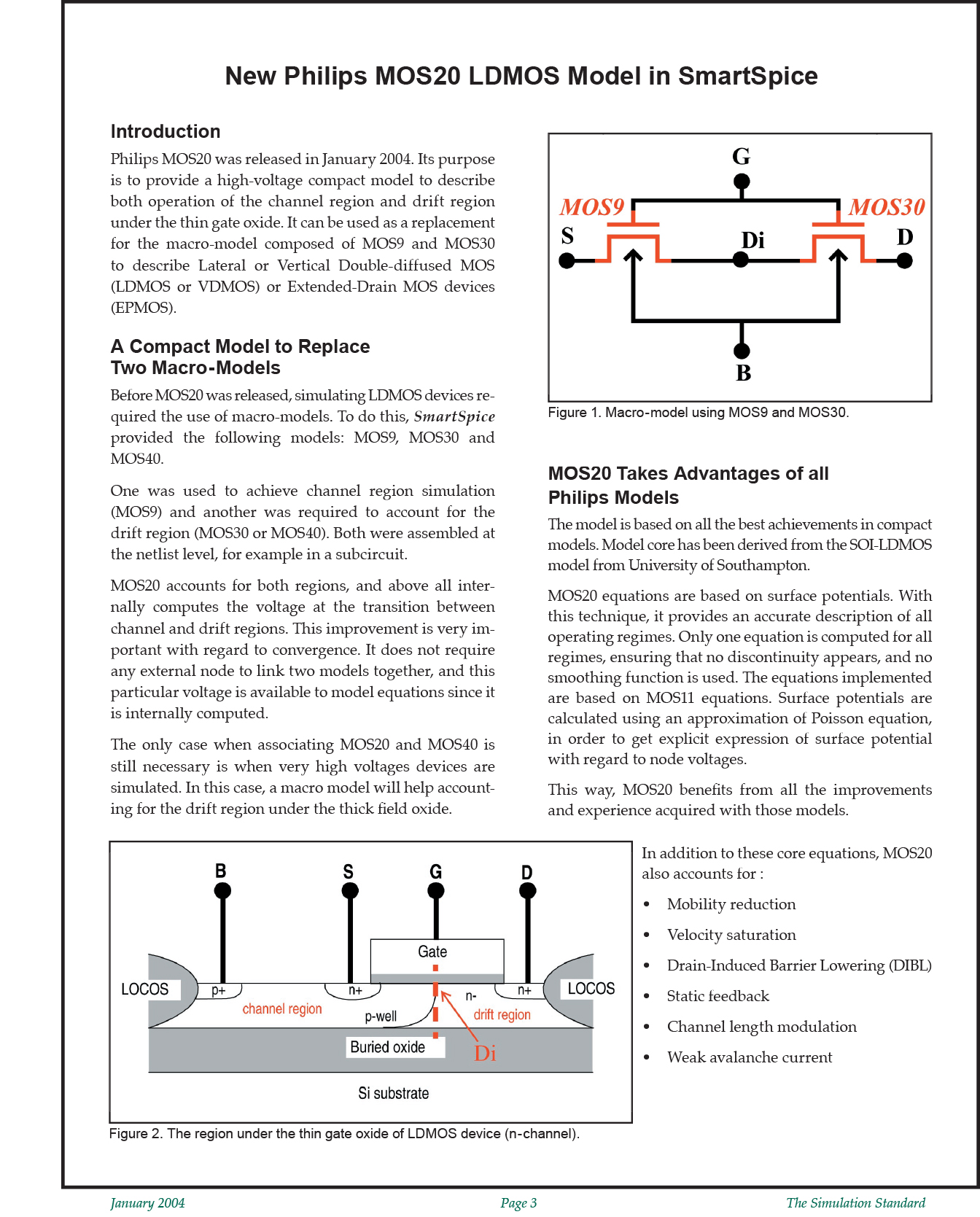New Philips MOS20 LDMOS Model in SmartSpice
Introduction
Philips MOS20 was released in January 2004. Its purpose is to provide a high-voltage compact model to describe both operation of the channel region and drift region under the thin gate oxide. It can be used as a replacement for the macro-model composed of MOS9 and MOS30 to describe Lateral or Vertical Double-diffused MOS (LDMOS or VDMOS) or Extended-Drain MOS devices (EPMOS).
A Compact Model to Replace Two Macro-Models
Before MOS20 was released, simulating LDMOS devices required the use of macro-models. To do this, SmartSpice provided the following models: MOS9, MOS30 and MOS40.
One was used to achieve channel region simulation (MOS9) and another was required to account for the drift region (MOS30 or MOS40). Both were assembled at the netlist level, for example in a subcircuit.
MOS20 accounts for both regions, and above all internally computes the voltage at the transition between channel and drift regions. This improvement is very important with regard to convergence. It does not require any external node to link two models together, and this particular voltage is available to model equations since it is internally computed.
The only case when associating MOS20 and MOS40 is still necessary is when very high voltages devices are simulated. In this case, a macro model will help accounting for the drift region under the thick field oxide.



